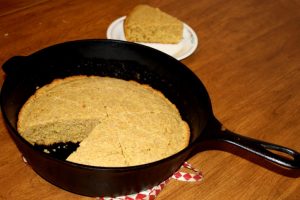Whenever I advise my clients to avoid Gluten, I feel the pain and inconvenience that they will be experiencing. Little do they realise how difficult it can be to be Gluten-Free (GF). It may be surprising but many only consider bread to contain gluten, and unaware that common foods like cake, biscuits, cereal, pasta, spaghetti and samosas also contain wheat. GF education is vital at this point, teaching them on how to read ingredient lists, and never automatically assume that something is gluten-free. For some this was a mistake when they tucked into Kit-Kat chocolates or certain crisps.
Processed foods are the worst; gluten can be found in readymade burgers, meatballs, kebabs, gravy, beer, candy, hot dogs, sausage, french fries and much more. It can take up to 10 days to adapt to the new diet. Depending on the culture or lifestyle many gluten containing food may be part of their basic diet e.g. sandwiches for lunch or rotis/chapattis for Asians. Eliminating such foods can be a huge challenge, not just for the individual but also the family.
Cooking from scratch and finding replacement foods is crucial to a successful GF diet. Most supermarkets now have a gluten-free aisle with a variety of products. This has made it much easier for shoppers. However, my patients find that one of the greatest challenges is a good bread replacement. Especially, if one of your favourites is toast at breakfast and sandwiches for lunch. They describe the shop bought GF bread to be too sweet or have a strange texture. Baking your own GF bread is one alternative, but being more creative with your meals is another way to overcome such limitations. You can see GF chapati recipes here. Here are some recipe suggestions;
Gluten Free Soda Bread
(Thanks to M. Martin: Based upon a recipe by Hugh Fearnley-Whittingstall)
Equipment Required
A 2 lb loaf tin, a large mixing bowl, greaseproof paper, a large spoon or bowl scraper, a ‘stone’ or marble worktop
Useful Tips
- pre-heat the oven
- flour your hands to avoid the dough sticking to you
- flour the ‘stone’ for a similar reason
- if using yoghurt, set yoghurt tends to make a better dough
- if using plain flour, use a smaller amount of liquid, say, 400 ml, as plain flour will absorb less liquid than bread flourImportant.
- Try to work or knead the dough as little as possible. Unlike yeast bread, you are relying upon the soda to produce gas to make the bread rise. Working the dough allows the gas to escape.
- Gluten free flour will never rise as well as wheat flour, since it doesn’t contain gluten. It’s gluten that traps the gas to make the bread rise.
Ingredients
- 500g gluten free strong bread flour or gluten free plain flour if you can’t get bread flour
- 2 tsp (teaspoon) bicarbonate of soda
- ½ tsp salt
- 450 to 500ml of buttermilk or plain yoghurt
Method
pre-heat the oven to 200°C (Mark 6)
- Weigh out the flour into the mixing bowl and add the bicarbonate of soda and salt. Ensure that the ‘dry goods’ are well mixed.
- Make a ‘well’ centre of the flour and stir in the buttermilk or yoghurt.
- Keep stirring until the ingredients are combined into a dough that is ‘nearly’ sticky. (You may find it easier to use your hands or a bowl scraper.)
- Tip out the dough ball onto the floured ‘stone’ and shape the dough to fit into the 2 lb loaf tin lined with the greaseproof paper. (You might want to score the top with a knife, or dust the top with a little flour. Or, you may not.)
- Get the tin into the hot oven as quickly as you can and bake at 200°C (Mark 6) and bake for 40 to 50 minutes. (As a rule of thumb; the thicker the metal of your tin, the longer the baking time needed.)
- After baking, take the tin and place on a wire rack to cool. Leave the tin exposed if you’d like a crunchy crust, or cover with a clean tea towel, if you’d like it a little softer. Once cool enough to touch, turn the loaf out. It can be eaten now, if you like. (The loaf is baked if you tap the bottom and hear a dull, hollow sound.)
- The loaf is best stored in a bread bin, wrapped in greaseproof paper. It’ll keep for about 3 to 4 days. The older the bread is, the ‘chewier’ it will be, but around day four, it’ll still make good toast. Remember though, that gluten free bread will need longer in the toaster than wheat bread.
Variations
- You can add your favourite seeds to the dough to make seeded bread: Add the seeds to your ‘dry goods’.
- You can make ‘cheesy’ bread by grating cheese into the ‘dry goods’ in the same way as above. Sprinkle grated cheese over the top of the loaf five minutes before the end of the baking time.
- If you like Marmite, add a teaspoon of Marmite as you stir the buttermilk into the ‘dry goods’ at Step 2 above. Just remember, Marmite is a strong taste; don’t overdo it!
- You can add finely chopped herb to the ‘dry goods’. Rosemary is pleasant.
Gluten Free Wraps
Corn Wraps (by Paul Hollywood)
Ingredients
- 150g/5½oz masa harina (finely ground cornmeal – available online)
- pinch salt
- 100ml/3½fl oz cold water
- 1 tbsp olive oil
Method
- Mix the masa harina and salt in a bowl. Add the water and olive oil and mix until a smooth dough is acheved. (If it’s too sticky add a little more masa harina, or, if it’s too dry, add a drop more water.
- Divide the dough into 24 balls. Cover and leave to rest in the fridge for 10 minutes.
- Flatten the balls of dough with your hands – alternatively, use a tortilla press or roll them between two layers of cling film. Flatten to approximately 3mm thick.
- To cook the tortillas, lightly oil a flat griddle pan or frying pan and place over a hot heat.
- Cook the tortillas for approximately one minute on each side, or until lightly coloured.
Pancake slices/wrap
You can make plain pancake slices/wraps quite easily and cheaply. You can make a larger batch and then freeze them ready for use.
Ingredients
- 100g GF Flour
- 2 large eggs
- 300ml milk
- Good pinch of salt
- 1 Tbsp cooking oil
Method
- Put the GF flour, eggs, milk, 1 tbsp oil and a pinch of salt into a mixing bowl or jug and whist to a smooth thick batter to make pancake slices. For pancake wraps add water to make a thinner consistency.
- In a medium frying pan over medium heat carefully wipe it with some oiled kitchen paper.
- When hot, pour some batter into the pan. Cook for 1-2 min on each side until golden.
Cornbread

- 200g polenta or fine ground cornmeal
- 284ml pot butter milk
- 25g butter
- 1 tsp baking power (GF)
- ¼ tsp bicarbonate of soda
- 50g frozen sweet corn, defrosted
- 2 large eggs, beaten
- Lightly toast the polenta in a dry frying pan for 3-4 mins, stirring to ensure even cooking, until the polenta has heated through, is fragrant and small patches are starting to turn golden brown. Take off the heat, tip half into a large bowl and add the buttermilk. Stir well, cover and leave to soak for 2-3 hrs.
- Melt the butter in a 25cm ovenproof frying pan (a cast-iron one is perfect) and heat oven to 220C/200C fan/gas 7. Stir the butter and the remaining ingredients, including the rest of the toasted polenta and 1/2 tsp salt, into the buttermilk and polenta mixture. (Don’t wipe out the frying pan – the slick of butter will ensure the bread doesn’t stick.)
- Put the pan back on the heat and turn up the temperature. Pour the mixture into the pan – it should sizzle as it hits it, like a Yorkshire pudding. Put the whole pan in the oven and bake for 15-20 mins until golden brown and firm in the middle. Leave to cool a little, then serve cut into wedges.
